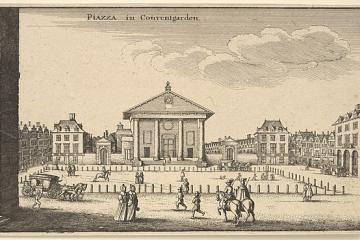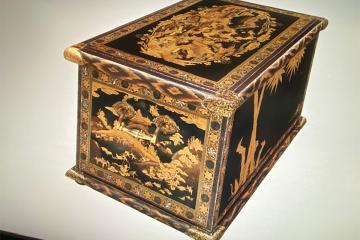This two-session special interest day takes as its starting point the equestrian works of three extraordinary artists, it examines this aspect of their work in a much broader cultural context.
George Stubbs (1724-1806), ‘The English Leonardo’
Many art historians and critics have compared the work of Stubbs to that of Leonardo da Vinci, one even christening him the ‘Leonardo of Liverpool’ to reflect his humble origins as the son of a Liverpool leatherworker. The comparison can seem hubristic until one considers the scientific method and investigation that lay behind the production by Stubbs of his world-famous Anatomy of the Horse published in 1766 – a work which revolutionised the understanding and depiction of equine subjects.
This lecture begins by looking at the equestrian subjects of Leonardo from his design for stables for the Sforza in Milan to his preparatory sketches for two great sculptural projects, the majority of which are preserved in the Royal Collection at Windsor Castle. It then goes on to examine the life and work of this country’s greatest animal painter, George Stubbs, putting him in the context of British sporting artists of the eighteenth century but also comparing his interests to those of da Vinci. It focusses on his depiction of equestrian subjects such as the National Gallery’s Whistlejacket but also looks at the extraordinary comparative anatomy studies he undertook towards the end of his career which reflected his profound interest in science and medicine.
The is followed by:
The Life and Work of Sir Alfred Munnings KCVO, PRA (1878 - 1959)
Alfred Munnings, the son of a Suffolk miller, left school at the age of fourteen when he was apprenticed as a commercial artist. Attending evening classes at the Norwich School of Art, Munnings would go on to become one of the most successful English artists of the first half of the twentieth century, ending his long career as President of the Royal Academy. This lecture looks at his amazing and extensive artistic output, from his early life as a commercial artist, through the extraordinarily evocative and powerful depictions of Canadian soldiers during the First World War to his mature work as this country’s leading sporting and equestrian artist. It also touches on the controversy around his views on Picasso, Henry Moore and modern art in general – as such it acts as an accessible examination of the tensions between figurative painting and non-representational art during the early twentieth century.






